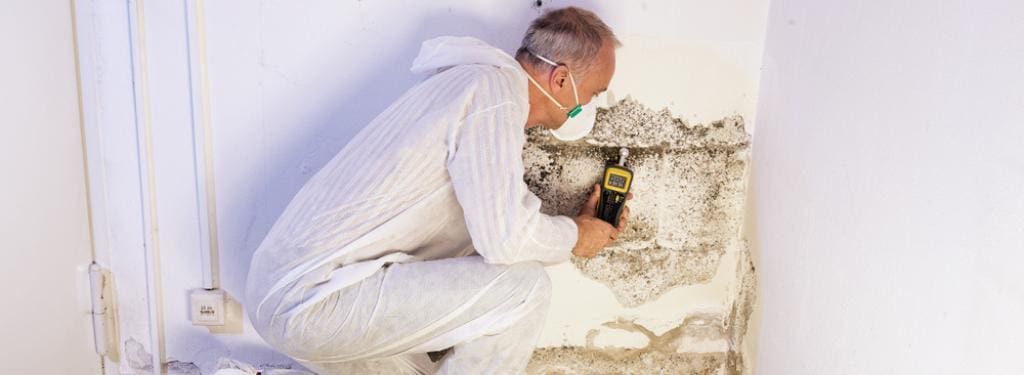After Mold Remediation Methods for Clean Rooms
After Mold Remediation Methods for Clean Rooms
Blog Article
Your Ultimate Guide to Article Mold Remediation Strategies
Navigating the world of post-mold removal strategies is a precise procedure that requires focus to detail and an extensive understanding of the ins and outs entailed. In the aftermath of mold invasion, understanding how to properly eradicate the mold and avoid its reoccurrence is vital for keeping a healthy interior setting. From picking the right cleaning and sanitizing techniques to executing methods for lasting mold and mildew avoidance, each action in the remediation journey plays a vital function in making sure a successful result. As we start this exploration of post-mold remediation strategies, we will uncover the essential techniques and best practices that can help you recover your room to its pre-mold problem and guard it versus future mold and mildew dangers.
Understanding Post-Mold Removal Process
After finishing the mold and mildew remediation process, it is important to recognize the post-mold removal methods that are necessary to make certain a detailed and effective clean-up. When the mold and mildew has been eliminated, the following step includes cleaning and disinfecting the affected areas to stop any regrowth of mold. This includes making use of specialized cleansing representatives to wipe down surfaces and eliminate any kind of continuing to be mold spores. It is necessary to dry the area completely to inhibit the development of mold and mildew in the future (After mold remediation). Correct ventilation and dehumidification can aid in this procedure.
In addition, conducting a final assessment post-remediation is essential to guarantee that all mold has actually been successfully eliminated. If the evaluation exposes any lingering mold and mildew, added removal may be necessary.
Effective Cleansing and Decontaminating Techniques

Avoiding Future Mold Development

Importance of Correct Air Flow
Correct air flow plays an essential duty in protecting against dampness build-up, a key variable in mold development within indoor settings. Efficient air flow systems assist get rid of excess moisture from the air, decreasing the opportunities of mold spores locating the moisture they need to spread and germinate. Without ample ventilation, indoor rooms can become a breeding place for mold and mildew, causing possible health and wellness risks and architectural damage.
By making certain appropriate air circulation, air flow systems can also help in drying damp locations faster after water damages or flooding events, further deterring mold growth. Post Remediation Inspection near me. Precede like shower rooms, attics, kitchen areas, and basements where wetness levels tend to be higher, installing and maintaining efficient ventilation systems is critical in preventing mold and mildew problems

Tracking and Upkeep Tips
Offered the important function that appropriate air flow plays in preventing mold and mildew growth, it is critical to establish reliable tracking and maintenance tips to make sure the continued performance of air flow systems. Normal evaluations of air flow systems need to be performed to look for any signs of obstructions, leakages, or breakdowns that more could restrain appropriate air movement. Tracking moisture levels within the property is also critical, as high moisture can contribute to mold and mildew growth. Setting up a hygrometer can help track moisture degrees and sharp property owners to any kind of spikes that might require attention. Furthermore, ensuring that air filters are routinely cleaned or important link replaced is crucial for keeping the performance of the ventilation system. Implementing a routine for regular maintenance tasks, such as duct cleansing and HVAC system evaluations, can assist prevent problems prior to they rise. By remaining alert and proactive to the problem of ventilation systems, home proprietors can efficiently minimize the risk of mold and mildew regrowth and keep a healthy and balanced indoor setting.
Final Thought
In conclusion, post-mold remediation techniques are important for guaranteeing a tidy and secure setting. Understanding the process, carrying out reliable cleaning and sanitizing methods, preventing future mold development, maintaining appropriate air flow, and normal monitoring are all vital steps in the removal process. By following these standards, you can efficiently eliminate mold and avoid its return, functioning or advertising a healthy living room for all occupants.
In the aftermath of mold infestation, recognizing how to efficiently eliminate the mold and avoid its reoccurrence is critical for maintaining a healthy and balanced indoor atmosphere. When the mold has actually been eliminated, the following step includes cleansing and disinfecting the impacted areas to prevent any type of regrowth of mold and mildew - Post remediation mold testing near me. After eliminating visible mold and mildew growth, it is essential to cleanse all surface areas in the damaged location to remove any continuing to be mold and mildew spores. To further improve mold prevention actions, it is important to address underlying problems that at first led to mold advancement.Provided the crucial duty that proper air flow plays in avoiding mold development, it is vital to establish efficient monitoring and upkeep suggestions to ensure the ongoing performance of air flow systems
Report this page